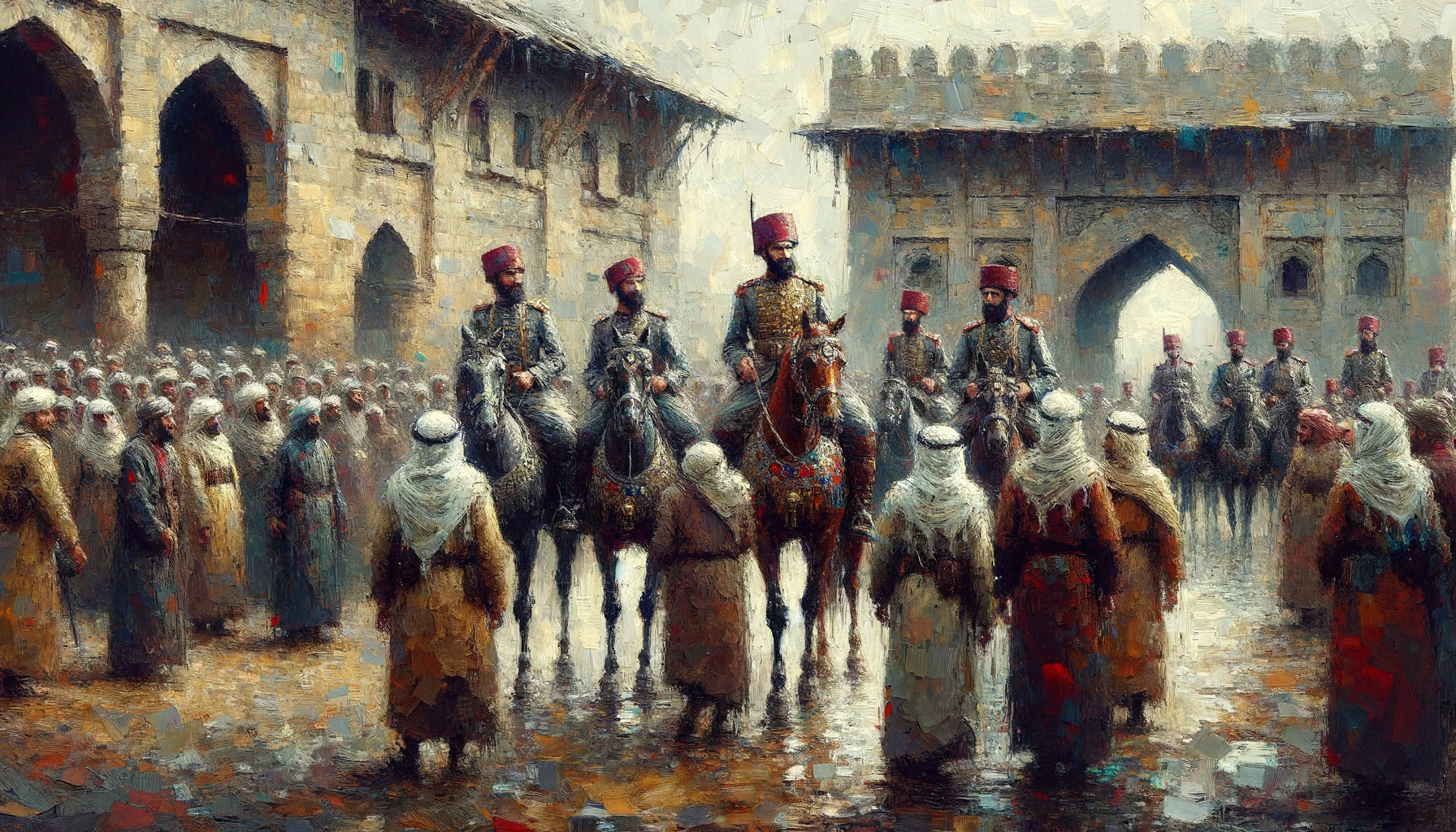The strategic importance of the Hijaz during the Ottoman/Egyptian-Wahhabi War, spanning from 1811 to 1818, underscores a critical period in the Islamic world, marked by military confrontations and shifting allegiances. Here we delve into the intricate details of this historical episode, focusing on the roles of key figures such as Muhammad Ali Pasha, the evolving dynamics within tribes like the Harb, and the profound implications of controlling religiously significant cities like Mecca and Medina. By examining specific battles, treaties, and socio-political changes, we aim to provide a comprehensive analysis of the Hijaz’s pivotal position in the conflict between the Ottoman Empire, Egypt, and Wahhabi forces.
Historical Context of the Hijaz Pre-War
Prior to the outbreak of the Ottoman/Egyptian-Wahhabi War, the Hijaz held a distinguished place in the Muslim world, not only for its religious significance but also for its economic and political influence. The Sharif of Mecca, serving as the guardian of Islam’s holiest sites, wielded considerable authority across the region. During the early 19th century, Sharif Ghalib bin Musa’id found himself at the forefront of emerging tensions as Wahhabi doctrines began to challenge the established order.
The economic fabric of the Hijaz, particularly its role as a critical node in the incense and spice trade, further underscored its importance. The port city of Jeddah, vital for its strategic location on the Red Sea, served as a gateway linking the Indian Ocean trade network with the inland spiritual centres of Mecca and Medina. This economic vibrancy not only enriched the local populace but also attracted merchants, pilgrims, and political actors from across the Islamic world, setting the stage for the ensuing conflict that would dramatically alter the landscape of the region.
The Wahhabi Conquest of the Hijaz
The initial phase of the Wahhabi expansion into the Hijaz marked a turning point in the region’s history. In 1802, the forces led by Saud bin Abdulaziz al-Saud launched a ferocious attack on Ta’if, a city known for its allegiance to the Sharif of Mecca. The aftermath of the conquest saw a significant massacre and the looting of Mecca, highlighting the Wahhabi commitment to purging what they considered religious innovations and practices contrary to their interpretation of Islam. This event not only signaled the Wahhabi movement’s military might but also their intent to reshape the religious landscape of the Hijaz.
By 1803, the Wahhabi forces had advanced further, capturing Mecca and challenging the traditional guardianship of the Sharif over the holy cities. The symbolic and actual loss of Mecca to Wahhabi control underscored the movement’s growing influence and the diminishing authority of the Sharifate.
In response to the Wahhabi expansion, the Ottoman Empire, recognizing the threat to its religious and political hegemony in the region, commissioned Muhammad Ali Pasha, the Wali (governor) of Egypt, to reclaim the Hijaz. Sultan Mahmud II’s decision in 1811 to entrust this mission to Muhammad Ali Pasha marked a pivotal shift in the conflict dynamics. Muhammad Ali’s strategic military reforms and his recruitment of Albanian mercenaries were indicative of his determination to restore Ottoman control and influence over the strategic and spiritually significant region of the Hijaz.
The Strategic Importance of the Hijaz
The control over Islam’s holiest sites, Mecca and Medina, situated within the Hijaz, granted unparalleled religious legitimacy and influence. The administration of the Hajj pilgrimage, in particular, afforded the controlling power a profound sway over the Islamic world. The Wahhabi’s control of the Hajj, following their conquest of Mecca, not only solidified their religious standing but also enabled them to propagate their reformist interpretation of Islam. This period saw a significant shift in religious authority, challenging traditional practices and reshaping the spiritual landscape of the region.
Geopolitical Significance
The Hijaz’s strategic position, straddling vital trade and pilgrimage routes, underscored its geopolitical importance. This region, with its historical trade routes like the Darb Zubaidah, played a crucial role in the economic and political stability of the broader Middle East. Control over the Hijaz meant influence over the flow of goods, pilgrims, and information, making it a pivotal area for any power wishing to assert its dominance in the Arabian Peninsula and beyond.
Military Significance
The terrain of the Hijaz presented unique challenges and opportunities for military campaigns. The arid deserts and rugged mountains required specialized knowledge and tactics, as exemplified during the siege of Medina in 1812. The logistical difficulties faced by the Egyptian forces, under the command of Muhammad Ali Pasha, highlighted the Hijaz’s significance as a military theater. Securing water sources and supply lines across this harsh landscape was critical for any campaign’s success. The strategic use of oases and control over key passages became focal points in the military strategies employed by the Ottoman-Egyptian forces and the Wahhabi fighters.
The Egyptian Campaigns in the Hijaz
The Egyptian campaigns to recapture the Hijaz from Wahhabi forces were marked by several key military engagements, illustrating the strategic depth and military prowess of Muhammad Ali Pasha’s forces. One of the most notable was the capture of Mecca in 1813 by Muhammad Ali’s son, Tusun Pasha. This victory not only signalled a shift in control of the holy cities but also demonstrated the effectiveness of the modernized Egyptian military, which combined traditional Ottoman military techniques with new strategies and technologies.
The Battle of Turubah in 1813 stands out as a pivotal moment in the campaigns. Tusun Pasha’s forces encountered and decisively defeated a significant Wahhabi army, showcasing the superior tactics and organization of the Egyptian military. This victory disrupted the Wahhabi’s ability to project power across the Hijaz and cut off their supply lines, laying the groundwork for further Egyptian advances.
The campaigns also highlighted the critical role of local tribes in the conflict. The shifting allegiances of these tribes, such as the strategic alliance forged with the Harb tribe, proved instrumental in securing Egyptian control over key routes and locations. These alliances not only facilitated the movement and supply of Egyptian forces but also provided valuable intelligence and manpower, underscoring the complex social and political landscape of the region.
The successful recapture of the Hijaz by Egyptian forces culminated in the eventual siege and fall of Diriyah in 1818, the stronghold of the Wahhabi movement. This victory marked the end of the Wahhabi control over the Hijaz and reaffirmed Ottoman sovereignty in the region, albeit through the military prowess and strategic acumen of Muhammad Ali Pasha’s Egypt.

Aftermath and Strategic Implications
The Treaty of Diriyah in 1818 marked the conclusion of the Ottoman/Egyptian-Wahhabi War, leading to the re-establishment of Ottoman and Egyptian authority over the Hijaz. This treaty not only signaled the defeat of the Wahhabi forces but also the beginning of a new era in the region’s governance. Muhammad Ali Pasha’s successful campaign ensured his son’s appointment as the Sharif of Mecca, solidifying Egyptian influence in the Hijaz. This strategic victory allowed Muhammad Ali to extend his control beyond Egypt, playing a pivotal role in the Ottoman Empire’s political landscape.
The aftermath of the war had profound implications for the political and religious fabric of the region. The decline of Wahhabi power temporarily halted the spread of their reformist ideology, although it would later resurface and continue to influence Islamic thought and politics. The reassertion of Ottoman authority over the Hijaz re-established a semblance of stability and preserved the Empire’s influence over Islam’s holiest sites. However, this period also laid the groundwork for future conflicts and the eventual rise of the Saudi state, which would once again challenge Ottoman hegemony in the Arabian Peninsula.
The strategic importance of the Hijaz, highlighted by its religious, geopolitical, and military significance, had far-reaching consequences for the Middle Eastern geopolitical order. The control over Mecca and Medina not only conferred religious legitimacy but also geopolitical leverage. The Ottoman/Egyptian-Wahhabi War underscored the intricate relationship between religion, politics, and military power in shaping the region’s history. This conflict set the stage for subsequent developments in the 19th and 20th centuries, influencing the colonial and post-colonial dynamics in the Middle East.
Conclusion
The Ottoman/Egyptian-Wahhabi War, with the Hijaz as its focal point, was a conflict that reshaped the religious, political, and military landscape of the Arabian Peninsula. The strategic significance of the Hijaz, encompassing its religious sanctity, geopolitical importance, and military challenges, was vividly highlighted throughout this period. The control over Mecca and Medina not only determined religious authority but also influenced the broader geopolitical dynamics within the Islamic world.
The war’s legacy, marked by the re-establishment of Ottoman and Egyptian influence and the temporary suppression of Wahhabi power, set the stage for future conflicts and transformations. This essay has underscored the pivotal role of the Hijaz in these historical developments, demonstrating how its strategic importance has been a constant in the ever-evolving tapestry of Middle Eastern history.

